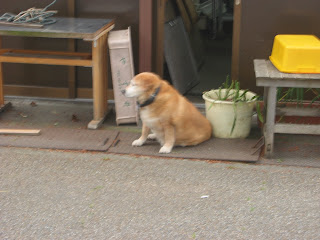Stepping into a gym full of Japanese children, I finally started to feel at ease again. (I'm in a constant state of ease-to-unease here-- restaurants kill my confidence, while train stations do it justice). Even though the third grade students were chattering (quickly!) in a language I can't claim to understand, I felt very much at home. Perhaps this is because, despite the musical zigzags of third-grade Japanese, I had an instantaneous connection with the students of the elementary school.
Let me explain. In Japan, I am very much a child. Everything is new. Everything is exciting. Everything is strange. Everything is much, much, much more complicated than it should be. I think the students recognized this. As soon as I stepped into the gym, which was packed with a hundred students, a group of children snatched my hand and began to carefully detail the days activities. When I seemed confused, they would pat me on the arm and, with the earnestness of tiny obaasans and ojiisans, reiterate the day's goals. Moreover, the students realized that everything, even tiny details, were new to me. Unlike many adults in this country, the children explained the minutia of life (like the classroom goldfish and the importance of totoro stamps on well-done homework). Finally, they were absolutely obsessed with my nose piercing and long, curly hair. (I took out all of my earrings to show them the "body holes" the piercings had made. They were satisfied, if a little repulsed.) Needless to say, we got along very well. Children are children, regardless of geography, creed, race, culture etc. etc. etc. The are innocently objective-- questioning and appraising life with a sincerity many adults lack. In the future, I hope to tap into this objectivity more frequently.
Also-- at the end of the day, I was handed a large bag filled with origami made by the students. Very special.
On the subject of childishness... I have become very appreciative of the Jizo statues that dot the countryside and streetways. Jizo protects children-- especially those who have died before their parents (miscarriages, abortions, and early deaths). Living in a foreign country, away from my family and loved ones, I sometimes can't help but feel a little like a lost child wandering aimlessly. In many ways, Japan has helped me grow incredibly independent. However, it has also helped me rediscover the childish wonder I had perhaps abandoned in my college-student cynicism. I wobble through this place, amazed by everything and confused by even more. I can't help but feel that the deity's benevolence extends to me in my tottering and clumsy exploration of this magnificent country.
Pictures...






















































